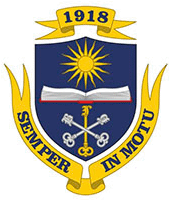The new interactive museum called BIM (the abbreviation for ‘Bolshim and Malenkim’ (for adults and children)) is in some way unique. It does not have traditional exhibits: pots, shards, or other similar things. It was created by two Voronezh companies, Prosveshchenie Digital and Interaktivnyie musei, specialising in the development of IT products, incuding interactive educational programmes. BIM is an educational platform (or rather an attraction) where hi-tech technologies help you to learn more about Voronezh, its outstanding people, and about the places you can go to for a sightseeing tour.
Suppose you have a visitor from another city or country. Can you tell them about Voronezh in just one hour and captivate them with stories? Or can you quickly outline a series of excursions (and Voronezh does have interesting places to see and stories to hear)? Or, possibly, you and your children would like to learn more about the history of our city but you are at a loss about what to start with? Then, Bim is the answer. I am not talking about our favourite sculpture which you can see in the centre of Voronezh - a dog from a children’s book story. Though, you can also learn about it in the museum. So, take a photo of Bim the dog and turn left. On an old building (the address is 48 Prospekt Revolitii), you will see a neon sign with the word “BIM”.
‘There are lots of talks about developing regional tourism. However, it is still a problem in Voronezh to buy a map that shows its sights and offers touristic information for guests of the city. These are the kind of maps you can find easily in any touristic place,’ says one of the museum’s creators, Vadim NIKOLAYEV. ‘By the way, we will offer such maps for free. Actually, you can call BIM a highly technological guide for Voronezh and the Voronezh region. And I hope, both citizens of Voronezh and its guests will find it interesting.
One of the most unusual objets d'art in the museum is a bunch of red receivers hanging from the ceiling. If you put one to your ear, you can hear the sounds of Voronezh from various periods. You can hear birds sing, trams clang, and... sirens hoot, gunshots crack, the sound of a fighter plane, and the rumble of a bomb explosion. This objet d'art is devoted to the Great Patriotic War. You can read more about it from a card which can be found near the stand and imagine what happened during the terrible 1940s.
The visitors can also admire a gallery of 3-meter high portraits of our fellow-citizens, that were generated from old paintings and photos by a software program. If you just magnify old photos, which were normally very small, it affects the image quality. Moreover, that is what makes the museum stand out. Every portrait has a short biography which is easy to read. However, there are more things to see. Would you like to hear Ivan Bunin or Gavriil Troyepolsky read their stories? Or Mstislav Rostropovich play the cello? Or Maria Mordasova sing? The museum has a special portrait gallery with vintage receivers attached to them. If you put a receiver to your ear you can hear long dead people speak, sing or play a musical instrument. It is absolutely fascinating!
Do you know what timeline is? It is a visually compelling way to show the chronology of events. It is a line with dates and short notes, and photos. In BIM, a timeline is used to tell the visitors about the history of Voronezh, starting from 1177 when the word “Voronezh” was mentioned in chronicles for the first time. The dates on the timeline refer to various areas of the city life: the building of Chernavsky bridge, the opening of factories, and the creation of the first football team. To learn more about historical sights of the city you can enter “little houses”, small rooms with large LCD screens and touch sensor control where you can read about the Oldenburgsky’s castle, Durov’s museum, Kostyenki nature reserve, etc. What child (as well as adult) will agree to study a traditional paper brochure today!
Also, the museum has a resting space where you can watch videos showing breath-taking bird’s eye views of Voronezh taken by quadcopters. The videos are projected onto the walls, floor-to-ceiling. The creators of the museum are also planning to open a movie hall where children can watch educative films, and to reopen the old children’s café “Zolotoi Kluchik” which used to be found in the centre of the city. Additionally, the museum, as any proper touristic centre, offers free wi-fi and its receptionists can speak English. BIM works seven days a week, the entrance fee is between 200 and 600 roubles (for a family ticket).
Information for this article was provided by the following websites: http://www.moe-online.ru/news/view/356394.html.
Anna Yasyreva

